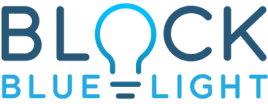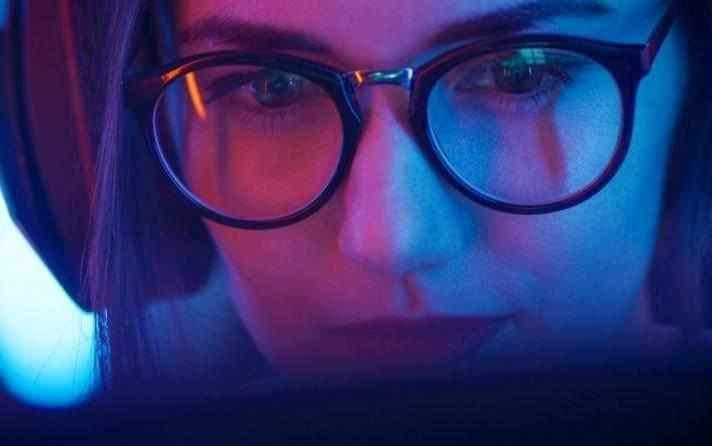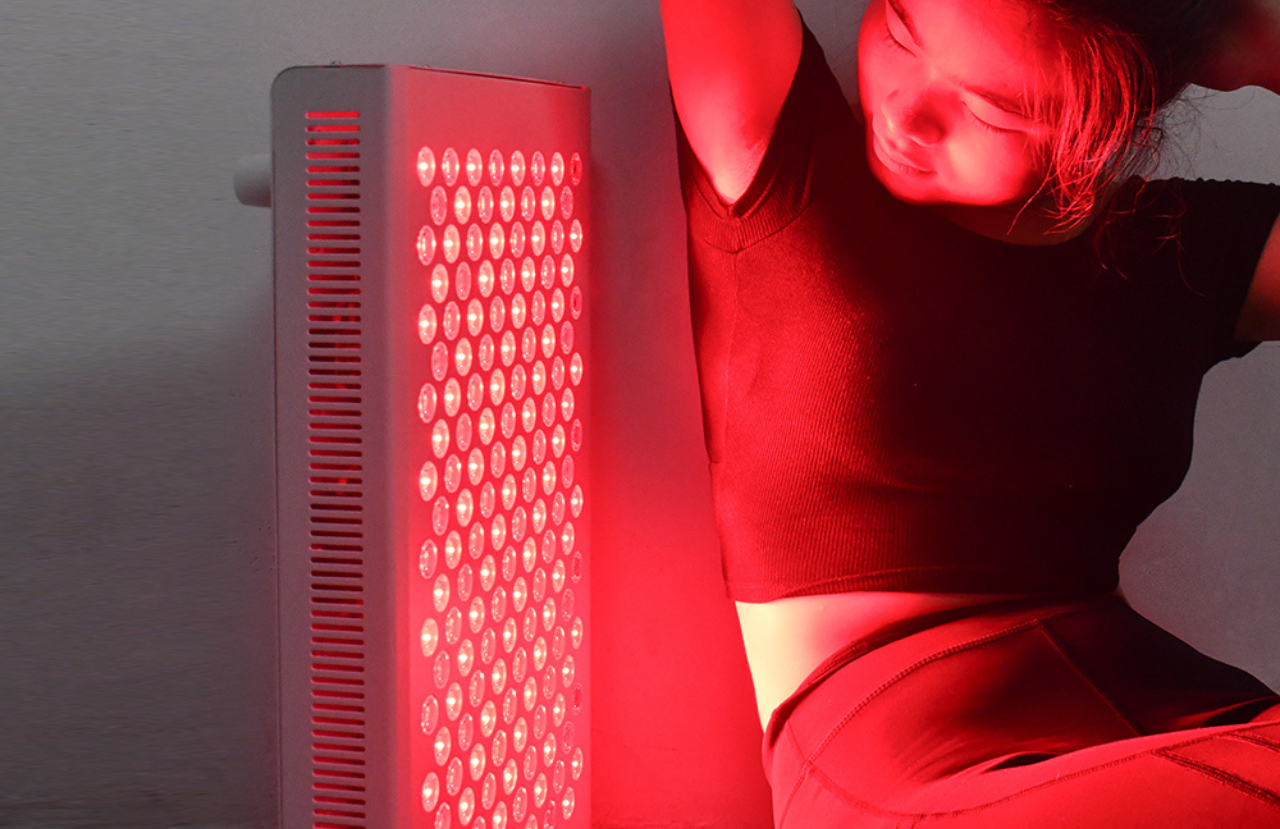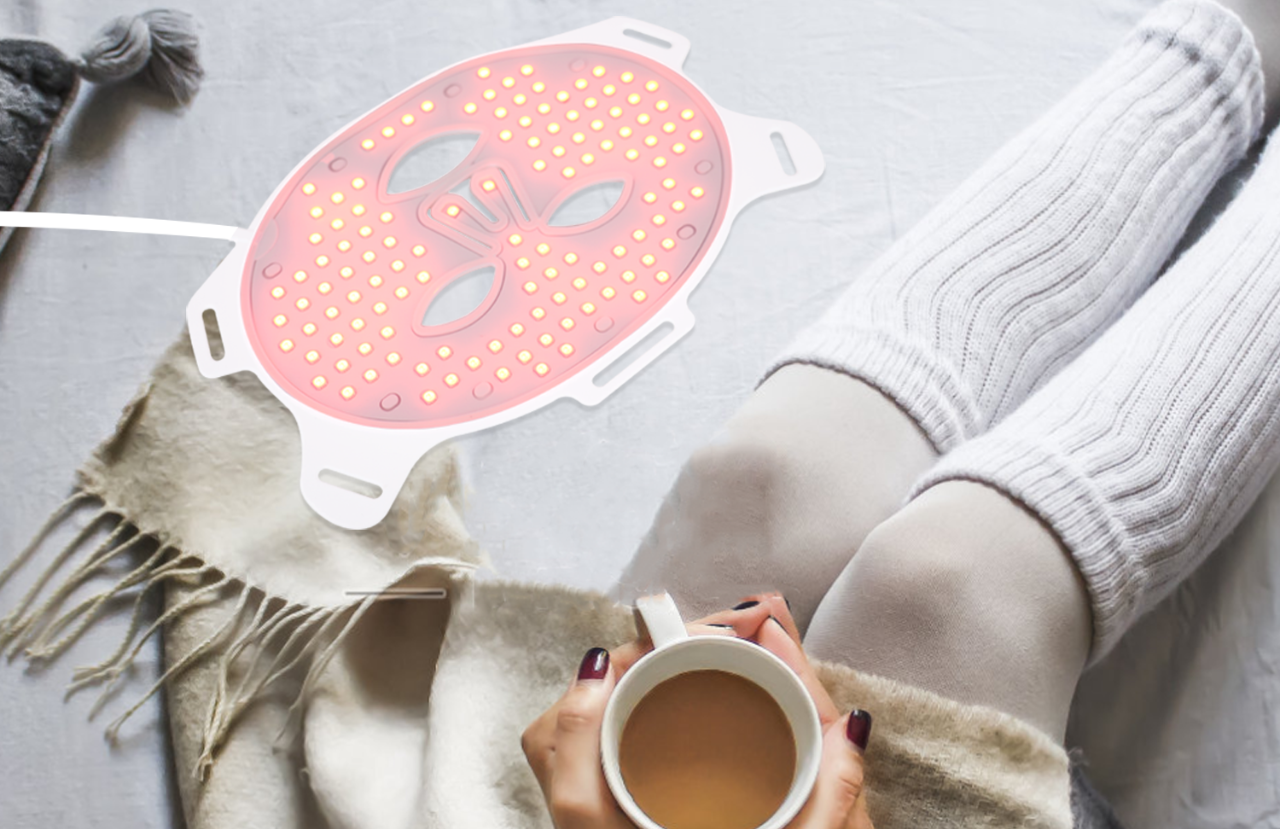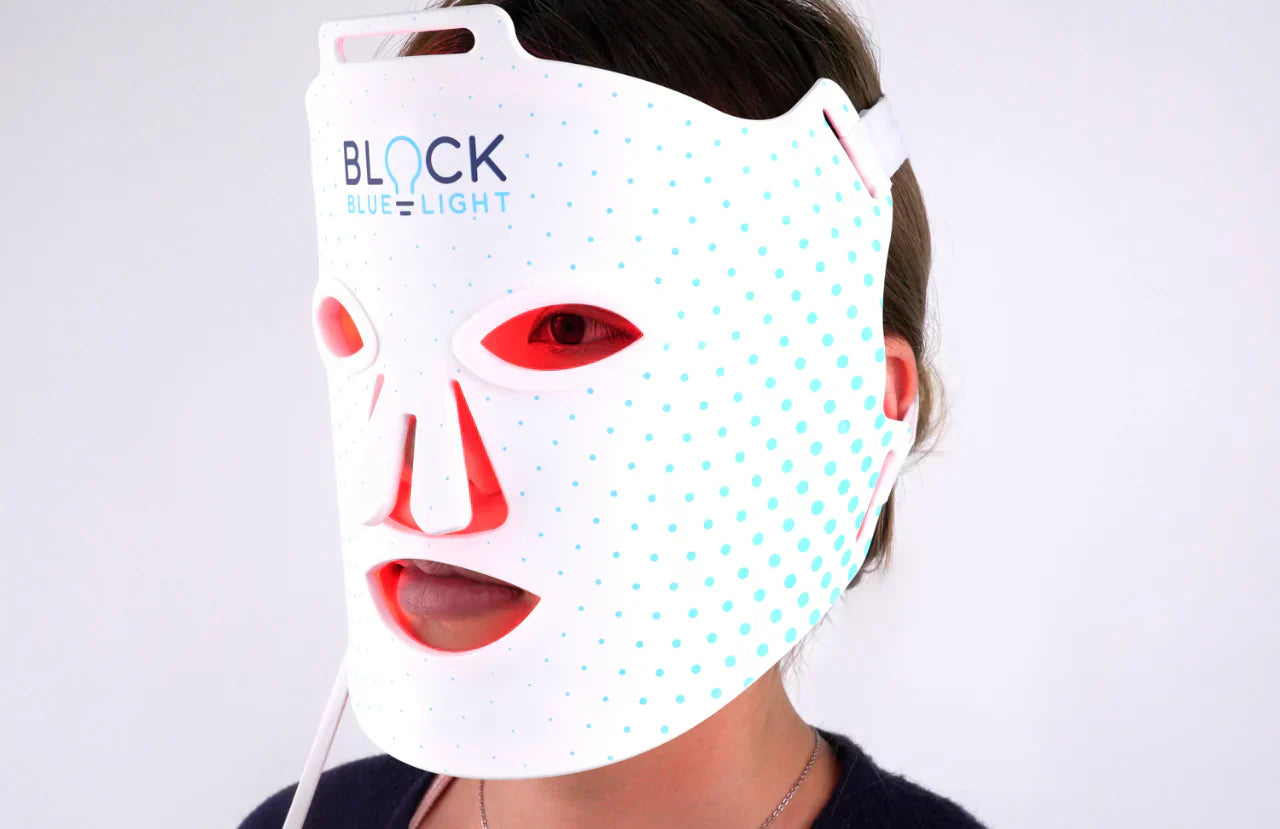Blue Light Concerns
Technology has made our lives much more efficient and enjoyable. From laptops to HD Televisions and smartphones, technology has firmly established itself as an indispensable convenience in our world. Living without them would be unthinkable.
Unfortunately, these modern miracles are not without their drawbacks. Our human biology hasn’t evolved at the same rate our technology has. Our bodies still operate under the assumption that all light is natural light. What does light have to do with electronics and our bodies? Everything.
The Science of Light
Not all light is created equal. Just look at a rainbow, and you can see that visible light varies. All light is made up of a spectrum of distinct waves. The human eye picks up light wavelengths from 380 to 700 nanometers. The larger the number, the weaker the light and the longer and slower the wavelengths.

Red, for example, exists on one end of the spectrum and is made up of low energy waves. Red tends to be soothing because of its low waves. However, red light isn't conducive to working or daily life. Yellow light is in the middle of the visible light spectrum. The sun, the earth's primary source of energy, emits more yellow light because of its surface temperature. Blue, on the opposite end of the light spectrum of red and with much more energy than the sun's bright yellow light, has the highest energy frequency of them all. Blue light wavelengths are shorter and more frequent, consisting of 415 to 495 nanometers. Compare this to red's 600 to 700 nanometers, and blue light's wavelengths are by far quicker and stronger.
Blue Light and the Human Body
Blue light is everywhere, and it has a very natural purpose for the human body. Though primarily yellow, the sun also emits natural blue light. This blue light provides the human body with energy and stimulation. It improves reaction times, puts us in a good mood, and speeds up our thought process. Our sleep-wake cycle is tightly regulated by blue light. The jet-lag, which the body feels when traveling through time zones, is a side effect of the blue light disruption into the sleep-wake cycle.

Artificial sources of blue light also exist. The artificial light from the technology we hold near and dear, such as smartphones, laptops, and energy-efficient light bulbs, to name a few, all emit high amounts of blue light. Many of today's electronic devices use LEDs, to strengthen clarity and brightness on screens and keyboards. LEDs emit very high amounts of blue light.

Electronics and artificial light increase human exposure to artificial blue light, with serious consequences. New to our evolutionary history, technology impacts our mental and physical health in ways that our bodies have yet to develop firewalls against.
Blue Light and Your Eyesight

According to a 2016 report published in the International Journal of Ophthalmology, states blue light emitted from electronics may cause diseases such as "dry eye, cataract, age-related macular degeneration, even stimulating the brain, inhibiting melatonin secretion, and enhancing adrenocortical hormone production, which will destroy the hormonal balance and directly affect sleep quality."
High-intensity blue light can come from any light source, including the sun. Consistent exposure to blue light can potentially damage the eyes.
Blue Light Differences: Day Versus Night

Sunlight is the primary source of blue light. However, our bodies have evolved to accommodate and follow the light cycle of the sun. The artificial blue lights from electronics and lighting is a different story.
During the day, humans are exposed to additional blue light from indoor artificial lighting and electronics. Much of the exposure is from directly facing computer screens, televisions, tablets, and smartphones, where the blue light flows directly to our eyes.
As the day progresses, people remain exposed to artificial lighting and electronics up until bedtime. This exposure can prevent people from getting adequate sleep and contribute to a decline in productivity and mental wellbeing. And, to make things even worse for some people, blue light can filter in during their sleep from light pollution.
Blue Light and Sleep
Research indicates that blue light from electronics can severely impact sleep. Sleep is one of the most important ways for the body and mind to recover and heal. According to the National Institutes of Health, sleep deficiency is a consistent lack of sleep. Sleep deficiency can be a risk factor for disorders like depression, diabetes, and obesity.

According to Harvard researchers, blue light, more than any other type of light, suppresses the release of the sleep hormone melatonin in the body. Melatonin regulates our circadian rhythm, which is our sleep-wake cycle. Human eyes are sensitive to blue light as an indicator to sleep or remain awake. If exposure to blue light is constant, then the brain does not receive a message from the eyes to release melatonin. The body then chooses to remain awake or only sleep lightly.
Blue Light Glasses

Excessive blue light can cause eye damage, sleep deficiency, and impact mental health. Unfortunately, in this day and age, short of moving to an off the grid cabin in the woods, it's almost impossible—and unreasonable—to eliminate exposure to blue light.
One very convenient option is to prevent blue light from reaching the eyes by wearing blue light blocking glasses. The important thing to note, though, is that not all blue light blocking glasses are the same. Some are much more effective at blocking blue light than others.
The Truth About Clear Lens Blue Light “Blockers”
Here’s the truth about clear lens blue light blocking glasses that help you fall asleep—there is no such thing! Clear lenses do not block the kind of light that keeps you from falling asleep. These should not be called blue blocking glasses at all as they only filter blue light, not block it. To truly block blue light it requires colored lenses to fully block its light waves. Clear lens blue light "blockers" have nothing to do with keeping insomnia inducing blue light from reaching your eyes, no matter what the companies say. It’s about science, and the science of light waves prevents clear lenses from blocking all blue light that interferes with melatonin release. Period.
What these clear lens blue light “blockers” do is filter the blue light, mainly to prevent eyestrain. Their lenses do not filter out the blue light that prevents you from falling asleep. To filter out that wavelength of blue light, the lenses would have to be colored lenses, preferably amber or red. The true name for these type of daytime glasses is computer glasses or blue light filter glasses.
Some companies go to great lengths to try to prove that their clear glasses block blue light by using light demonstrations from a pen or screen. The light source in these demonstrations only emits a different wavelength of light, usually violet. This light is not the same light present in most artificial lighting and LEDs. These companies are deliberately misleading the public and misusing science. Do your homework when purchasing blue light blockers. Let’s look at the science and compare them to our BlockBlueLight glasses.

Cheap and Ineffective Blue Light Filter Glasses
Our BlockBlueLight ScreenTime computer glasses filter 50% of blue light across the entire blue light spectrum, making them far superior to less expensive glasses. Due to the rise in popularity for blocking blue light there are now many companies in the market offering inexpensive clear lens blue light glasses. However these glasses are useless and a waste of money. Most of these cheap glasses only filter 10-20% of blue light and do not help to manage sleep or protect eyesight in any significant way.
During the day its important for us to significantly reduce our blue light exposure, but not block it completely. As mentioned earlier moderate levels blue light during the day is important for health and keeping us awake and alert, however the levels we are consuming is far to high and completely unbalanced with the rest of the colour spectrum. We need to filter blue light across the entire spectrum by about 50% to bring this more into balance, this is the most effective amount to filter by during the day; filtering anymore will leave you feeling tired and unmotivated and start to tell your brain its nighttime, and filtering any less will give you headaches, eye strain and leave you feeling anxious.
Optometrists may even offer blue light "blocking " coating on prescription lenses. Unfortunately, the extra cost for this coating is unwarranted and ineffective. Most optometrists may offer the coating, but don’t know any specifics about what range and percentage of blue light the layer might block. The fact is, the coatings do not block blue light from the entire blue light spectrum or the part of the spectrum the matters the most.
Many blue light filter glasses claim to block a large percentage of blue light. However, the range of blue light they filter matters greatly. For example, most electronic devices emit light at their most potent wavelengths of about 440-460 nanometers. A majority of cheaper clear blue light blocking glasses and coatings only filter blue light in the 380-420 nanometer range. This limitation in range means light from electronic devices (at 440-460 nanometers) are allowed to pass through, making the glasses useless.

All blue light, which includes sunlight, LEDs, and other electronic devices, are within the wide range of 400 to 500 nanometers. For blue light filtering glasses to be truly useful, they must filter blue light over the entire blue light range. BlockBlueLight lenses from our daytime range filter blue light over the whole 400 to 500 nanometer blue light spectrum. More specifically they filter 50% of blue light at 455 nanometers, this is where the most energetic, damaging light emitted from screens, LED’s, and other modern artificial lighting. The majority of other blue light filter glasses available will filter 0% at 455nm.
Blocking Blue Light For Sleep
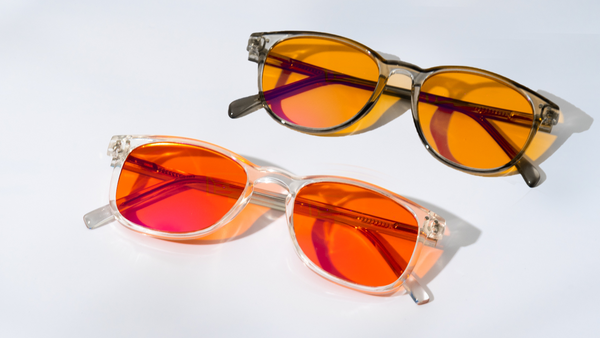

What are the best blue light blocking glasses for sleep? These will be glasses with a red or amber lens, they will not be yellow or clear.
Is it as simple as getting any pair of glasses with a or red or amber lens? No not at all! You need to make sure amber lenses block 100% of blue light and approx 40-50% of green light. A quality red lens will remove 100% of blue and 100% of green light; while not as much as an issue as blue light, studies show green light also can interfere with melatonin release, so blocking all green light is even more effective for obtaining quality sleep! When buying a set of blue blocking glasses make sure the company selling them to you is able to provide you with a spectrum analysis of their lens to showing how much light they are actually blocking, if they cant provide you with this, RUN!
Choosing BlockBlueLight
BlockBlueLight ScreenTime Computer glasses filter two times or more the amount of blue light than other clear lens blue light glasses. These glasses filter 50% of light throughout the entire 400 to 500 nanometers range. BlockBlueLight utilizes its ClearBlue lens technology, which provides crystal clear vision without any color distortion in addition to effective blue light blocking ability. The ClearBlue lens technology allows just the right amount of light to pass through, enough to contribute to alertness, function, and good mental health.

BlockBlueLight also takes the science and natural circadian rhythm into account by developing its nightfall glasses. Nightfall glasses block 100% of blue and green light and are optimized to promote sleep by filtering out all wavelengths that interfere with melatonin production. These blue blocking glasses are made for people who are serious about improving their sleep and want the best possible product to do the job.

Unlike the ScreenTime Computer glasses, Nightfall glasses are made purely to allow your mind and body to power down and obtain the sleep it needs. Utilizing the two types of blue light glasses throughout the day and into the night enables your body to follow a natural rhythm, simulating the natural rhythm set by the sun and our bodies.
Blue Light Glasses for Children

According to the American Optometric Association (AOA), children are at a higher risk for blue light eye damage than adults because their eyes are still developing and lack the proper protection that adult eyes have. Children are also much more susceptible to the emotional and circadian rhythm effects of blue light because they require a larger volume of sleep to remain healthy.
Children’s ScreenTime glasses, as well as kids Nightfall glasses, are available from BlockBlueLight, providing the same coverage from harmful light found in adult glasses, but with a smaller, kid-friendly fit.
Shedding Light on Ineffective Blue Light Blockers
There are ways to protect your eyes and your sleep from blue light. However, many of these choices aren't practical in the long run. Avoiding all electronic devices is not a possibility in this day and age.
Utilizing blue light glasses is the smart move, but it's essential to make the right choices when purchasing blue light blockers. Knowing what type of glasses you need for night time and what type of blue light glasses you need during the daytime, then understanding what percentage and range of blue light is filtered and/or blocked with each different type is the key to buying adequate blue light blocking / filter glasses.
Avoid cheap and useless blue light blocking glasses and buy glasses backed by science and made to be truly effective.
With BlockBlueLight, you know that you're purchasing quality, proven, and effective blue light blocking products. Your sleep, health, and eyesight are worth the cost.
Resources:
AOA: Blue Light Impact on Children (link in text)
https://www.aoa.org/Documents/OptometryCares/Blue%20Light%20Impact%20in%20Children.pdf
Blue Blocking Filters and Digital Eyestrain 2019 (link in text-2016)
https://www.ncbi.nlm.nih.gov/m/pubmed/30570598/
Daily blue-light exposure shortens lifespan and causes brain neurodegeneration in Drosophila (2019)
https://www.nature.com/articles/s41514-019-0038-6
Daily exposure to blue light may accelerate aging, even if it doesn't reach your eyes 2019
https://www.sciencedaily.com/releases/2019/10/191017101253.htm
Exposure to Blue Light
https://www.sciencedaily.com/releases/2019/10/191017101253.htm
International Journal Of Ophthalmology
Research progress about the effect and prevention of blue light on eyes (2019
https://www.ncbi.nlm.nih.gov/pmc/articles/PMC6288536/
Harvard Health Publishing, Blue light has a dark side
What is blue light? The effect blue light has on your sleep and more. (2012)
https://www.health.harvard.edu/staying-healthy/blue-light-has-a-dark-side
Will Blue Light from Electronics...
https://www.health.harvard.edu/blog/will-blue-light-from-electronic-devices-increase-my-risk-of-macular-degeneration-and-blindness-2019040816365
How Blue Lights Affect Mental Health (link in text-mental health) https://www.mhanational.org/blog/how-blue-light-affects-mental-health
NASA Visible Light
https://science.nasa.gov/ems/09_visiblelight
National Institutes of Health (link in text-sleep deficiency)
https://www.nhlbi.nih.gov/health-topics/sleep-deprivation-and-deficiency
Retina Today
http://retinatoday.com/2016/04/understanding-blue-light/
Why Blue Light Is So Bad: The Science — And Some Solutions (2018)
https://medium.com/@caseorganic/why-blue-light-is-so-bad-the-science-and-some-solutions-d992a352464b
Wexner Medical: Blue Light and Vision (link in text-damage)
https://wexnermedical.osu.edu/blog/blue-light-and-vision
